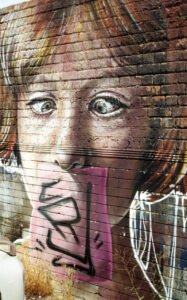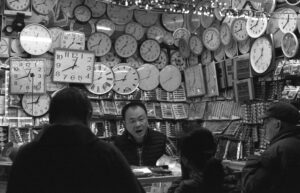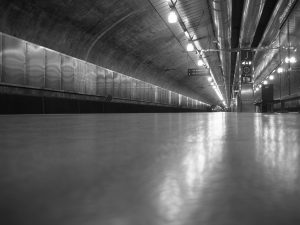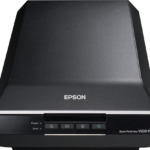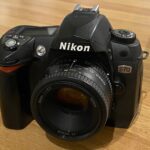For anyone who’s not a photography obsessive, the term “full frame” may well be completely meaningless. A 35mm film SLR camera is full frame, this means two things – the image taken covers an area of approximately 36mm wide by 24mm tall on the film and secondly, the viewfinder is large, bright and shows you exactly what will be recorded onto the film. Technically, any 35mm film camera is full frame as it will also produce 36x24mm negative images.
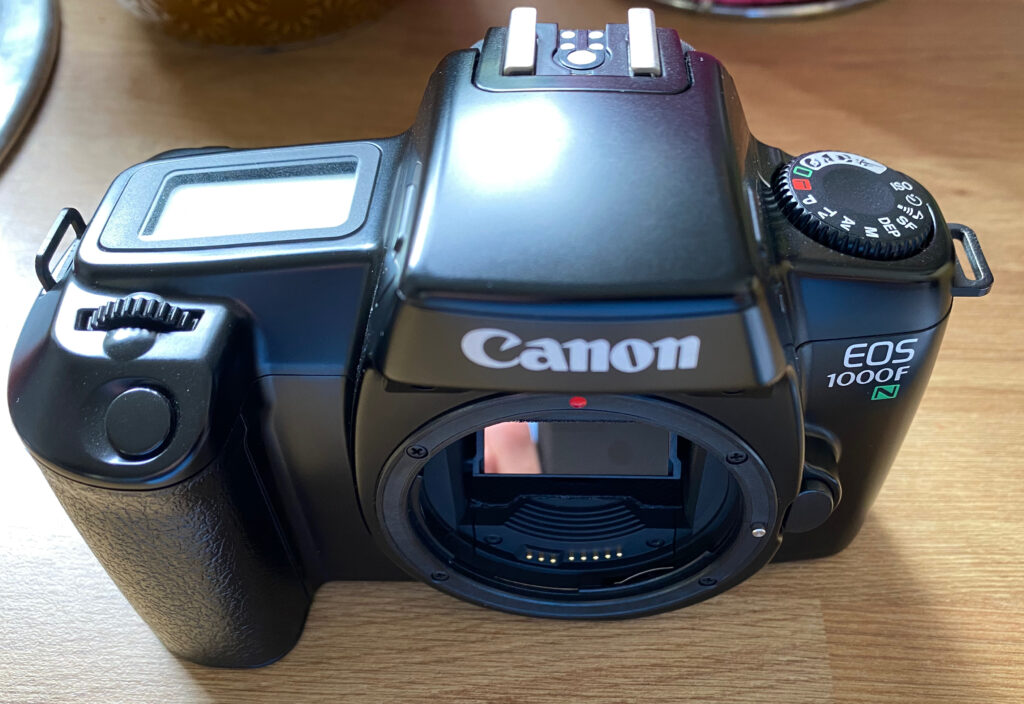
You might think that a 36mm wide image sounds extremely small, and you’d be right. Before it became the overwhelmingly common format for film, medium format or “120 film” was most popular. A medium format negative is huge in comparison. Whilst it’s possible to actually record multiple sizes of images on medium format, commonly cameras produced 60x90mm frames. This gives you incredible detail, tone and enlargement possibilities. The downside is you get 8 shots out of a whole roll of 120 film. Eight.
A 35mm negative put through a really good film scanner or enlarger will produce extremely crisp, sharp and detailed images. There are multiple factors that affect the quality of a 35mm image including the ISO, quality of film used and its ability to resolve detail (record the light that enters the camera). If you had an ideal situation you may get somewhere around an 8 megapixel equivalent image out of a 35mm negative. This is an interesting figure to keep in mind.

When digital SLR cameras began to emerge, they had one significant limitation – they were not full frame cameras. What does this mean when a digital camera doesn’t have a film in it? Why does it matter? The answer is that the sensor is smaller than 36x24mm. A smaller sensor means that there is, as a consequence, a smaller area on which to focus the light that the lens allows in to the camera. As a result, a 50mm lens on full frame is indeed 50mm, put it on most digital SLR cameras and it’s suddenly an 80mm lens.
This is because the smaller sensor and geometry of the camera means the focal length is multiplied by 1.6x. This isn’t too much of a problem and certainly an acceptable trade off to be able to take endless images for free once you’ve purchased the camera. There are a few issues, though, which really did put many people off from transitioning across from their 35mm film SLR’s to digital.
Wide angle lenses really suffer with this 1.6x magnification, they are suddenly not that wide any more and every focal length you’re subconsciously used to now gets changed which throws you out. The bigger downside to a 1.6x crop camera is that if you’re used to a 35mm SLR viewfinder, the viewfinder on a digital camera is like looking down a very dark tunnel. It’s not as big, not as bright and therefore not as practical or comfortable to use.
People like me, who had never experienced an SLR before digital came along, didn’t notice this at all. In all honesty, when I picked up the 10D and 20D recently, at no point did I notice the poorer quality of the viewfinder, it just seems acceptable when you use them, but there is a noticeable difference if you switch between the two formats. I did miss the correct range of my lenses, especially at 50mm where I really didn’t want to be so close to subjects as 80mm makes them.
If you wanted to transition from full frame film to full frame digital, you’d have had to wait until the end of 2002 to buy one of these absolute units:

This monster of a machine would set you back £6999 in 2002. For inflation fans out there, that’s £10,478 and 59 new pence in todays (2021) money. In fact it’s almost certainly more like £11,000 with 2022 inflation. Either way, can you see the problem here? To put this in context, Canon’s best ever 35mm film camera, the EOS 1v, launched in 2000 for approximately £2500 and they were still producing and selling those until 2018! The bottom line is, basically no one outside of professional photography or people with deep credit cards could even dream of getting in to full frame digital photography.
In all honesty, not much has changed. Today, if you want to buy a full frame DSLR you can still expect to shell out many thousands (shh, I don’t want to hear about mirrorless cameras, the idea of an electronic viewfinder makes me feel sick). However, back in 2005, Canon introduced a camera which would see a whole host of amateur and professional photographers finally make the switch to “affordable” full frame digital photography. That camera was the £2500 5d Mark 1 or “5D Classic” as people seem to call it today.
That same groundbreaking camera can be picked up for £150 today from second hand dealers and around the £100 mark if you get lucky on ebay. This is absolutely outrageous value for money. Anyone considering the usual “why would you bother, it’s old tat… etc” argument is currently making a faint whooshing sound as they sail past “the point” in the far distance.

I would consider myself predominantly a film photographer, but you should never pigeon hole yourself. The whole point is just to enjoy taking pictures, and in my case, enjoy the fact that these days you can pick up and play with so much cheap kit and for such a small amount of cash. Until recently, I had no intention of picking up another digital SLR, but having won the 10D for basically nothing I thought I should pick up one decent digital body so I always had that option. My mentality when buying things is usually “if you’re going to do it, do it properly” as far as the money allows.
I am in no position to buy a new camera, nor even a remotely modern camera, but then I really don’t want one. As you will have noticed recently, I don’t use a great deal of features, I don’t have complex demands of a camera and I tend to use digital cameras in the same way I’d use a film camera. With that in mind, my only requirement was the magical full frame. I’d never been able to access or afford one before, but due to the wonders of depreciation and other people’s desire to upgrade, now I could. The 5d just seemed like the obvious choice.
I picked up my “as new” copy of the 5D for about £235 from MPB.com (aka, one of the most dangerous shops in existence). I went with them because they had a decent reputation, a sensible way of grading their stock and they were almost certainly going to provide a better buying experience than going through eBay. For a £10 camera, I don’t care too much if something goes wrong, for a £200 camera that’s different and frankly I don’t trust anyone on eBay enough to give them anywhere near that sort of money. Everything I’ve done in photography up to this point has been on the cheap, so this is a big deal in terms of spending.

Whilst I was there, I decided I can’t have a full frame camera without a decent full frame lens, so I picked up the 24-105 f4 L whilst I was at it. This was not a cheap shopping trip as again I wanted “like new” condition – I look after my things and I wanted these to be in the same condition I’d keep my own cameras in. The 0% credit card has received a significant Basil Fawlty style thrashing and is now having an extended lie down. I used to own a 17-40 F4 L and using that on a crop camera effectively made it a 24-70. I deliberated for days (I’m terrible at decisive action when it comes to buying things) between the 24-70 and 24-105 and in the end it just didn’t make sense to restrict myself to 70, when the 105 range would come in useful.


Do you remember how I said the buying experience from MPB should be better than ebay? Well, about that…
It turned up next day as promised and initially looked like it had been reasonably packaged. In reality, however, the camera itself was wrapped in some tissue paper and then wrapped in some “protective” cardboard which looks like a thin sheet that someone has taken a knife to and cut lots of little diamond shapes out of. That’s it. There was a bit of brown paper stuffed round the sides but honestly, I think they can do better to protect things in transit. Couriers are excellent at drop goals with parcels.
It seemed fine at first, it turned on ok and the buttons seemed to work. Fortunately, I didn’t press the shutter and fire off a test shot. If I had, I’d have almost certainly destroyed the mirror because there was an odd sound. A rattling sound. A “something is definitely broken” sound.
I opened the body cap and the focussing screen promptly dropped out.

Initially I jumped to the conclusion that it must’ve been knocked out by being thrown about in delivery. If that was the case then it needed to go back. I contacted MPB and to be fair, they offered to take it back immediately and replace it. The problem was, they didn’t have another that came up to the same standard as this one and I really wanted the best condition I could lay my hands on.
A courier was arranged and DPD promptly turned up to the house, failed to ring the doorbell and then ran off saying there wasn’t a package to pick up. They did this twice, despite me literally standing by the front door waiting for them. Things were getting silly.
In the meantime, I googled how to change a focussing screen on a 5D. It turns out that to remove the screen, a little carrier has to hinge down from the top of the mirror box for you to take it out. I looked really carefully at the focussing screen and there was absolutely no hint of any damage. I looked in the camera and the carrier was firmly locked into place as it should be. There was no way the screen had just fallen out, it was never in the camera in the first place.
I have absolutely no idea how MPB allowed this to happen or why no one had apparently noticed, but somewhere along the line the screen had been deliberately removed and not put back properly. I hinged the carrier down, plopped the screen back on and pushed it back into place with a reassuring click. It was fine, no hint of dropping out, no sign of lasting damage to it or the mirror. How odd.

Anyway, this now meant I finally had a working 5D. Although I really wanted to get out and use it, I didn’t get the chance for several weeks. Yesterday, however, after being inspired by Gavin Hoey’s 15 Minute Photo Challenges, I decided I could get out and make a decent attempt to at least capture some nice textures with it as a way of testing it out in the real world rather than taking pictures of the cat.

First impressions with the 5D are really good. As usual, if you’re used to Canon products you can just pick it up and start using it in an instant without really thinking about it. A few changes in the menus and you’re ready to go. In use it focusses quickly, has a glorious viewfinder, the shutter feels and sounds good and all the controls you need are intuitive. Ergonomically it’s my favourite digital camera to date, the size and weight seem to fit my hands perfectly and it balances really nicely in use.

By now you will know what’s coming next – I didn’t really use the screen that often, but it has to be said that its next to useless for accurately reviewing colour tone and exposure under most lighting conditions. Using the histogram is really useful in this respect, but it certainly is nice to have a decent size screen, easy to see and use menus and the ability to check whether something has gone drastically wrong. The colour and brightness really aren’t a concern going forwards and it certainly doesn’t take anything away from what a superb tool this camera really is.

If you’ve read my previous posts about the 10 and 20D, you’ll know that I was shocked by the crisp, sharp, colourful images that these bodies were capable of producing. Bodies that absolutely no one wants these days and would be viewed as a joke by many. Those two cameras produce images that I can’t fault, that I’d be happy to get printed and stick up on the wall without hesitation.
The 5D is something else. With the 10 and 20D I was applying approximately a 25-30% unsharp mask at 1.4 pixels radius on those images to just tighten them up and increase clarity. With the 5D there were several images where I almost couldn’t tell the difference with or without sharpening. The level of clarity from this camera body is insane for something over 15 years old.
So what are my conclusions from the 5D? Was it worth the money? Should I have bought a slightly newer camera or just not bothered with getting anything better than the 10D? After all, that’s an absolute favourite of mine and still produces awesome images.
The answer is yes, it’s absolutely worth it. Did I need the camera? No, of course not. Realistically I have two other digital bodies that I’m completely happy with should I want to use them. The 5D is everything I’ll ever need a camera to be. It produces 12MP images (remember film is approximately 8MP and I’m more than happy with the prints from that) and those images are so sharp, so detailed I cannot understand why I’d ever need anything better.
A lot of people talk about the “5D classic look” in that it produces images of a certain quality which you can’t quite put your finger on but is absolutely desirable. The few shots I have so far definitely exhibit a certain something when it comes to colour and feel.
Finally, we come full circle to that full frame angle. This is the deal clincher here. For £200 (and you can go much cheaper) I’ve picked up a camera which lets me access those real wide angle shots and has that large, bright viewfinder which you grow accustomed to using film. It opens up the possibility of using my FD lenses through an adapter because you can see enough detail to manual focus.
For anyone looking to get into full frame digital, I don’t really know of any sensible reasons why you wouldn’t just pick one of these up. It does everything you need, does it well and produces images that look amazing with very little adjustment or post processing.
I think my journey into digital kit is largely over now unless I find something that is stupidly cheap to just have some fun with. I don’t need anything else and it’d likely just sit on a shelf after one use if I did buy something. I’ve got the complete kit now, as far as I’m concerned, and this experience has just cemented my love of old kit that’s still perfectly capable today.
That is, of course, unless I find £100 down the back of a sofa, then I’ll buy a 1D because, come on, it’s a 1D…
Share this post:


